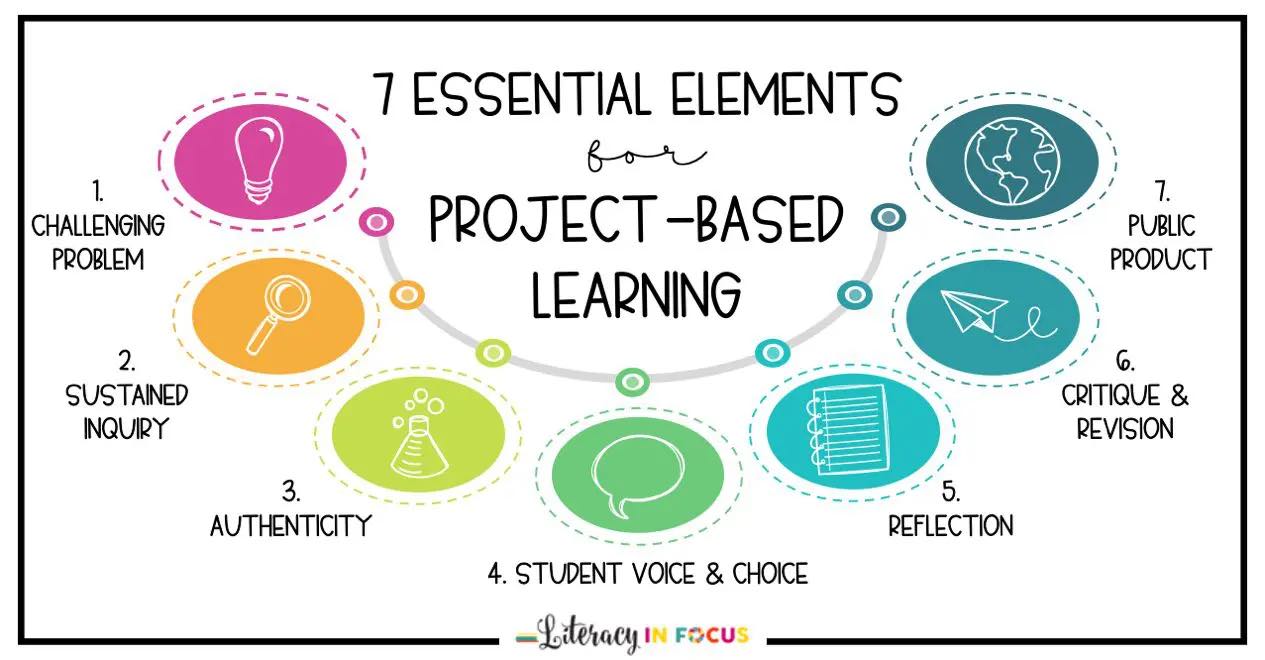
5 Practices to Integrate Project-Based Learning in Educational Institutions
Amid the ever-evolving realm of education, conventional teaching methodologies are slowly giving ground to inventive approaches designed to equip students for the future’s challenges. Project-Based Learning stands out as a revolutionary tactic, offering students an interactive, hands-on encounter aimed at cultivating critical thinking and problem-solving abilities. Know that educational institutions should adopt modern strategies to smoothly incorporate Project-Based Learning into their curriculum. Doing so will help them establishing an atmosphere conducive to fostering creativity, collaboration, and continuous learning.
- Continuous Assessment and Feedback Loop:
Educational institutions must implement a robust system of continuous assessment and feedback to maximize the benefits of Project-Based Learning. Instead of relying solely on traditional exams, educators should evaluate students’ progress throughout the project, offering timely feedback that guides improvement. The adoption of online examination software can also help streamline the assessment process. Know that it can provide educators with efficient tools to conduct secure and accessible exams remotely. Moreover, regular assessments can not only reinforces learning but also instills a growth mindset, teaching students to view challenges as opportunities for development.
- Curriculum Alignment for Seamless Integration:
The first step in successfully incorporating Project-Based Learning into educational institutions is ensuring alignment with the existing curriculum. Know that institutions need to identify key learning objectives and find opportunities to integrate projects that complement these objectives. By doing so, educators can seamlessly include Project-Based Learning into the educational fabric, making it an integral part of the learning experience rather than an isolated activity. This alignment ensures that students not only engage in hands-on projects but also achieve the academic goals set by the curriculum.
- Real-world Connections to Enhance Relevance:
A notable benefit of Project-Based Learning lies in its capacity to connect theoretical knowledge with real-world practical application. Institutions should endeavor to formulate projects that authentically replicate challenges found in the real world. This approach offers students a glimpse into the challenges they could encounter in their future professional journeys. It not only amplifies the importance of the learning journey but also equips students with practical skills and perspectives that surpass the constraints of conventional textbooks, empowering them for real-world success.
- Collaborative Learning Environments:
Project-Based Learning thrives in settings that promote cooperation and teamwork. As a result, educational institutions should cultivate a culture in which students collaborate to solve complicated issues, replicating the collaborative dynamics of professional businesses. By forming multidisciplinary project teams, institutions may imitate the range of skill sets prevalent in the actual world. It will help students prepare for the collaborative nature of modern workplaces.
- Technology Integration for Enhanced Learning:
In the digital age, leveraging technology is paramount for effective education. Institutions must seamlessly incorporate state-of-the-art technologies into their Project-Based Learning programs to optimize the educational landscape. This strategic integration not only elevates the overall learning experience but also prepares students for the dynamic demands of the modern world, fostering innovation, adaptability, and a tech-savvy mindset crucial for success. Virtual simulations, online collaboration tools, online library management system, and data analytics can elevate projects, providing students with a taste of the technological landscape they will encounter in their future careers.
To conclude, the integration of Project-Based Learning into educational institutions marks a transformative shift, ushering educational institutions in a dynamic and highly effective learning paradigm. This evolution not only enriches educational experiences but also prepares students with practical skills crucial for navigating the complexities of the modern world. Institutions can create an educational environment that not only equips students with knowledge but also prepares them for the challenges of the ever-evolving global landscape by aligning with the curriculum, emphasizing real-world connections, fostering collaboration, implementing continuous assessment, and integrating technology. Embracing these practices will undoubtedly contribute to unlocking educational excellence and nurturing the leaders of tomorrow.

